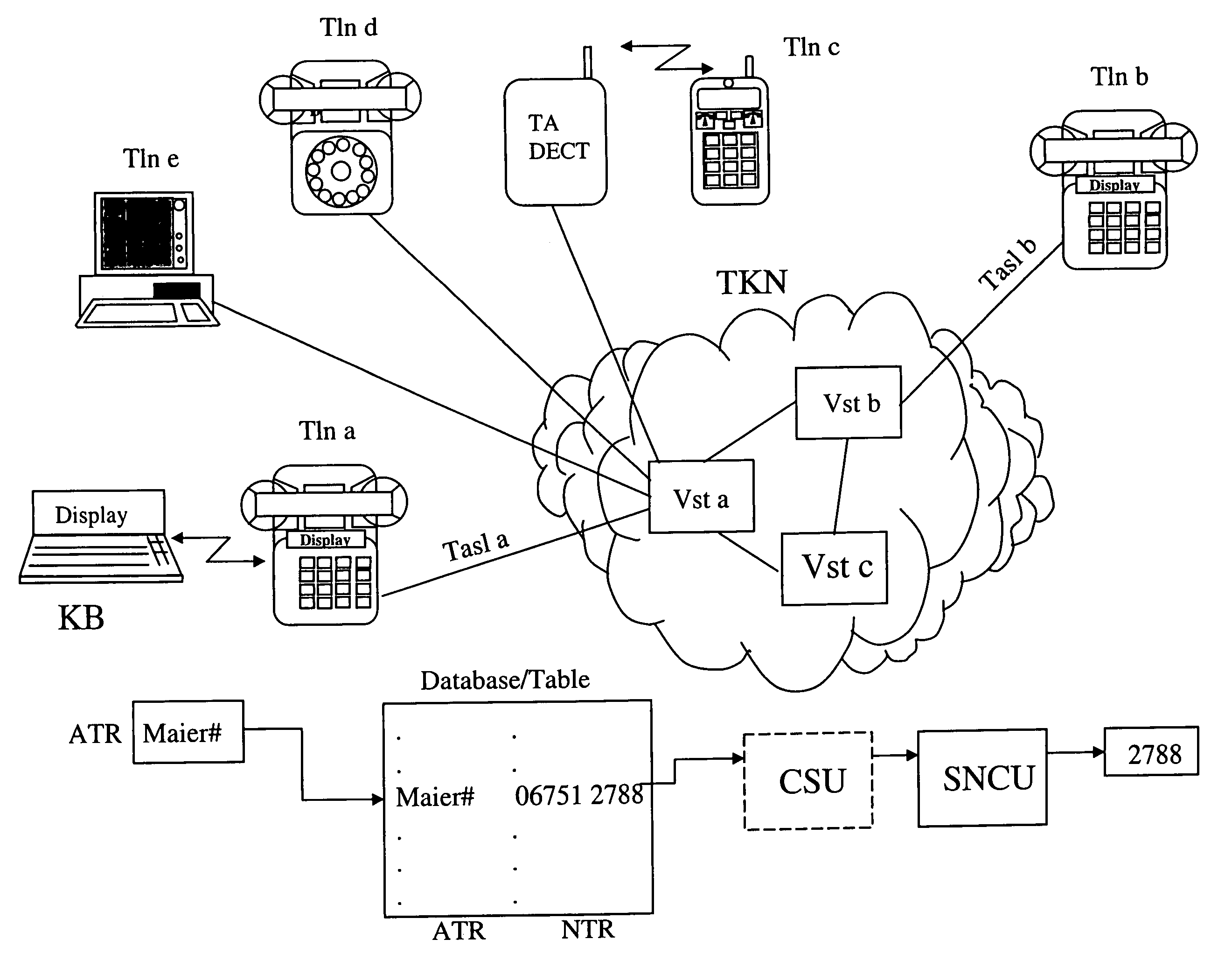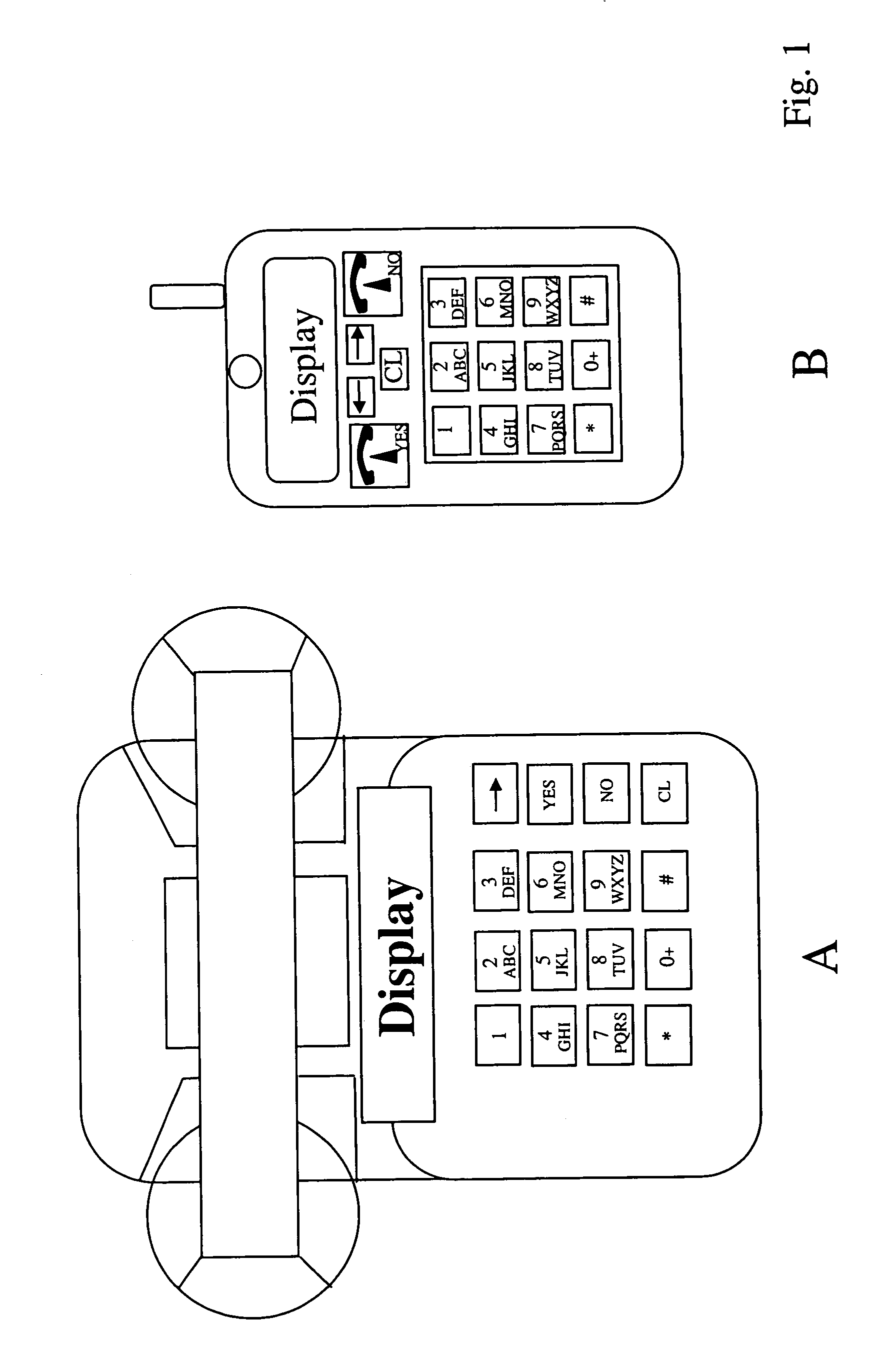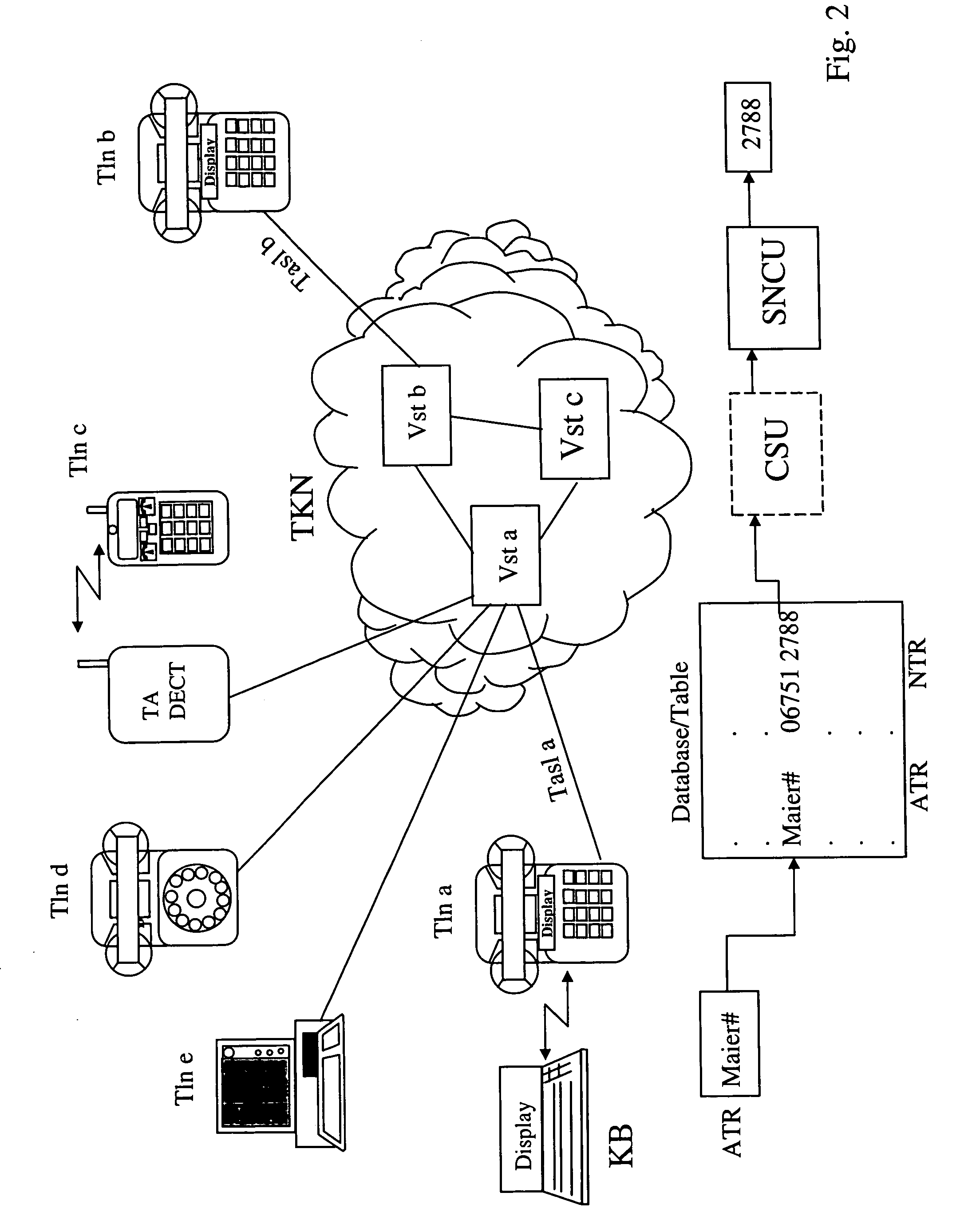Method for using alphanumerical signs as a call number
a technology of alphanumeric characters and call numbers, applied in the field of process to use alphanumeric characters for, can solve the problems of not changing the decimal, limiting the number supply and the (reasonable) maximum number of digits in the decimal system, and the current numerical dialing method contains additional disadvantages, so as to reduce the cost and risk, increase the work load, and increase the volume of disk storage
- Summary
- Abstract
- Description
- Claims
- Application Information
AI Technical Summary
Benefits of technology
Problems solved by technology
Method used
Image
Examples
Embodiment Construction
To Convert Addresses with a Database System
DETAILED DESCRIPTION
[0042]FIG. 1 shows two conventional telephones with the addition of alphanumeric characters on the keyboards, as an example. “A” is here a fixed line telephone for an ISDN connection, and “B” is either a conventional cordless telephone, for example based on the Digital European Cordless Standard DECT (Ref. 6), or a cellular phone for the GSM system (Ref. 4) for example.
[0043]In each case, the 12-button keyboard serves to choose or enter the alphanumeric name and telephone number in an internal dialing memory, where the additional keys may serve for conventional service operations of the terminal, in connection with a private telephone system or with the telecommunications network.
[0044]These terminals may also be used for the ATR method described by this invention, with appropriate modification of the software. In the present case, the terminal may be switched to an editing mode by special keys in order to generate the A...
PUM
 Login to View More
Login to View More Abstract
Description
Claims
Application Information
 Login to View More
Login to View More - R&D
- Intellectual Property
- Life Sciences
- Materials
- Tech Scout
- Unparalleled Data Quality
- Higher Quality Content
- 60% Fewer Hallucinations
Browse by: Latest US Patents, China's latest patents, Technical Efficacy Thesaurus, Application Domain, Technology Topic, Popular Technical Reports.
© 2025 PatSnap. All rights reserved.Legal|Privacy policy|Modern Slavery Act Transparency Statement|Sitemap|About US| Contact US: help@patsnap.com



